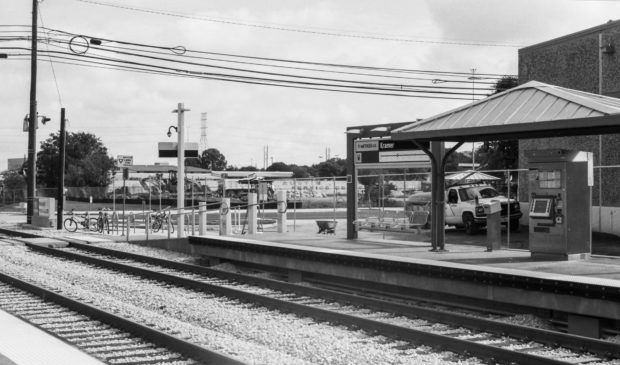Activist-led transportation bond vision adjusted and finalized
Thursday, January 9, 2020 by
Ryan Thornton The team behind the Wheel Deal, a community-led concept for a 2020 transportation-focused bond, released its final plan Wednesday after making several adjustments to its initial plan based on public input.
While the group sharply cut proposed funding in a number of areas, including the active transportation and improved local bus service components, new estimates for high-capacity light rail and the option to dig a downtown transit tunnel pushed total plan costs up from $4.377 billion to $5.36 billion.
However, the team still expects the proposed bond would cost the typical Austinite less than $1 per day, depending on their individual tax burden.
Residents are expected to vote on what may become Austin’s first high-capacity transit system in November, a necessary move if the city is to quadruple its transit commute share by 2039 as hoped for in the Austin Strategic Mobility Plan. The Wheel Deal includes a particular version of Project Connect, the Capital Metropolitan Transportation Authority’s mass-transit vision, while adding about $845 million for non-transit mobility investments.
At $4.515 billion, the public transit components still make up the bulk of costs. Citing the “newest, low-end official estimate” for light-rail on the high-capacity Orange and Blue lines, the new iteration increases the local cost of the Orange Line from $1.37 billion to $3.177 billion and the Blue Line from $768 million to $1.171 billion. Despite the much higher estimates, the group remains committed to light rail for the Orange Line and for the Blue Line segment between downtown and Austin-Bergstrom International Airport.
Capital Metro will present the community with its own recommendations on vehicle type for both high-capacity lines in February or March. As noted in the Wheel Deal rationale for sticking with light rail, the transit agency has made it clear that bus rapid transit may be cheaper and quicker to build but could reach full capacity much sooner than a light rail system.
The higher transit costs are also due to the option for a downtown transit tunnel allowing Orange and Blue lines to run free of vehicle traffic and other surface obstacles through the lower downtown core. The Wheel Deal includes the cheaper of Capital Metro’s two tunnel options, the “little h” design that omits the Blue Line tunnel along Trinity Street from Fourth to 11th streets.
In agreement with several of the comments submitted to the Wheel Deal website, the new plan makes a drastic cut to active transportation funding. The team said this is partially due to new cost estimates but also noted the limited capacity of city departments to make efficient use of sidewalk and bikeway funds. Bikeway funding was reduced from $684 million to $350 million, with sidewalk funding also dropping to $350 million. According to the Wheel Deal site, the new sums are enough to build the missing 166 miles of on-street lanes and urban trails included in the 2014 bicycle master plan and 550 new sidewalk miles.
While the high-capacity transit costs went up, the team said it initially overestimated cost of the MetroRapid network buildout. By reducing the total bus investment from $280 million to $167 million, the updated plan makes room for $18 million in non-MetroRapid bus capital improvements.
Notably, the Wheel Deal plan does not include funding for the 27-mile Green Line commuter rail system envisioned in Project Connect.
The new plan also cut the value capture fund from $595 million to $100 million and split it into two parts. One of the funds will be used to test the practice of strategic land acquisition and the other will be an equity-focused transit-oriented development fund that will be used to secure affordable housing and other amenities near transit stations.
Both the shade and Vision Zero funds were kept at their previous levels of $10 million and $35 million, respectively.
“We’ve improved our plan by listening to community voices,” said Urban Transportation Commissioner Susan Somers. “What we’ve put together is both feasible and transformative. It gives community members and policymakers looking for an ambitious bond proposal an off-the-shelf option that’s shovel-ready.”
Photo by Cherry Bream made available through a Creative Commons license.
The Austin Monitor’s work is made possible by donations from the community. Though our reporting covers donors from time to time, we are careful to keep business and editorial efforts separate while maintaining transparency. A complete list of donors is available here, and our code of ethics is explained here.
You're a community leader
And we’re honored you look to us for serious, in-depth news. You know a strong community needs local and dedicated watchdog reporting. We’re here for you and that won’t change. Now will you take the powerful next step and support our nonprofit news organization?






